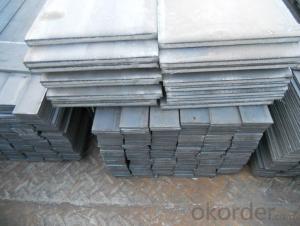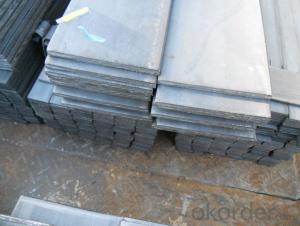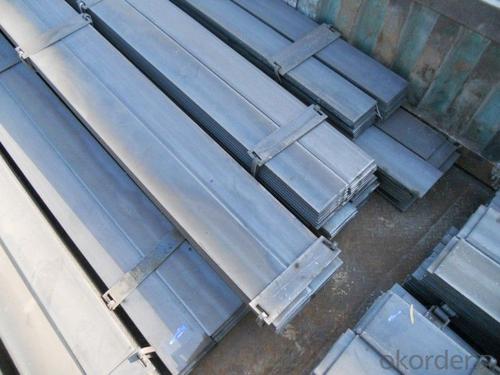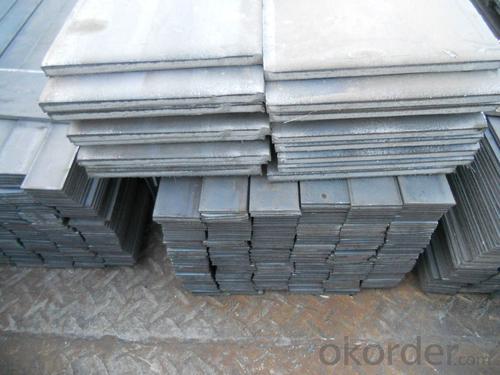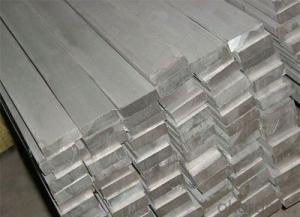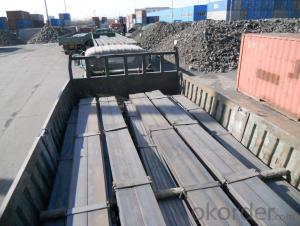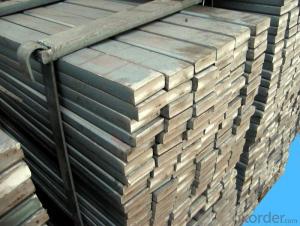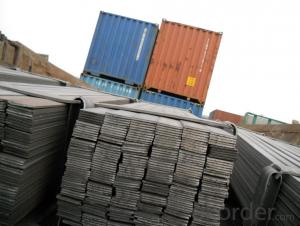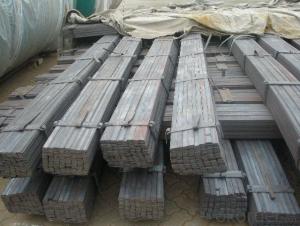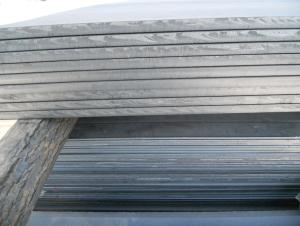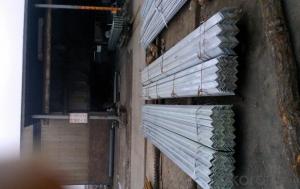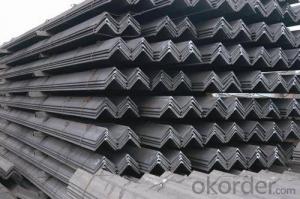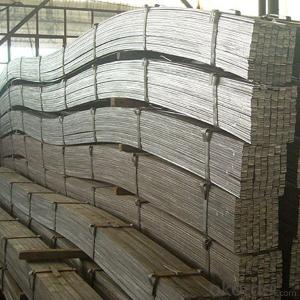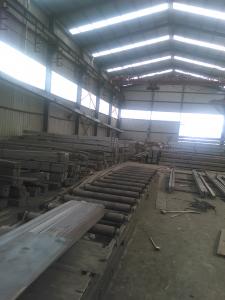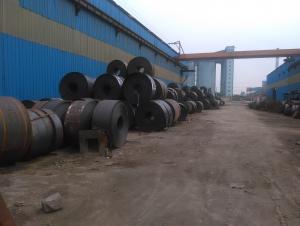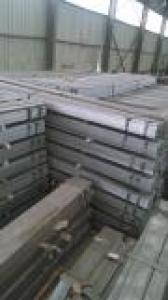Hot Rolled Seel Flat Bars with Best price
- Loading Port:
- Tianjin
- Payment Terms:
- TT OR LC
- Min Order Qty:
- 25 m.t.
- Supply Capability:
- 10000 m.t./month
OKorder Service Pledge
OKorder Financial Service
You Might Also Like
Product Description:
OKorder is offering high quality Flat Bar at great prices with worldwide shipping. Our supplier is a world-class manufacturer of steel, with our products utilized the world over. OKorder annually supplies products to European, North American and Asian markets. We provide quotations within 24 hours of receiving an inquiry and guarantee competitive prices.
Product Applications:
Flat Bars are ideal for structural applications and are widely used in the construction of buildings and bridges, and the manufacturing, petrochemical, and transportation industries.
Product Advantages:
OKorder's Flats Bar are durable, strong, and resist corrosion.
Main Product Features:
· Premium quality
· Prompt delivery & seaworthy packing (30 days after receiving deposit)
· Corrosion resistance
· Can be recycled and reused
· Mill test certification
· Professional Service
· Competitive pricing
Product Specifications:
Manufacture: Hot Rolled
Grade: Q195 – 235 ;SS400
Certificates: ISO, SGS, BV, CIQ
Length: 6m – 12m, as per customer request
Packaging: Export packing, nude packing, bundled
Chemical composition of Q235
Alloy No | Grade | Element(%) | ||||
C
| Mn
| S
| P
| Si
| ||
Q235
|
B
|
0.12—0.20 |
0.3—0.7 |
≤0.045 |
≤0.045
|
≤0.3
|
Physical properties of Q235
Alloy No | Grade | Yielding strength point(Mpa) | Tensile strength (Mpa) | Elongation after fracture(%) | ||||||
Thickness (mm) | Thickness (mm) | |||||||||
≤16 | >16--40 | >40--60 | >60--100 | ≤16 | >16--40 | >40--60 | >60--100 | |||
≥ | ≥ | |||||||||
Q235 |
B |
235 |
225 |
215 |
205 |
375--500 |
26 |
25 |
24 |
23 |
FAQ:
Q1: How soon can we receive the product after purchase?
A1: Within three days of placing an order, we will begin production. The specific shipping date is dependent upon international and government factors, but is typically 7 to 10 workdays.
Q2: How do we guarantee the quality of our products?
A2: We have established an advanced quality management system which conducts strict quality tests at every step, from raw materials to the final product.
Q3: The products are invoicing on theoritical weight or on actual weight basis ?
A3: We can do it in both manners, according to buyers' requirement.
Q4: What is the normal tolerance of flat bars?
A4: Normally 7%-9%, but we can also produce the goods according to the customers' requests.
Images:
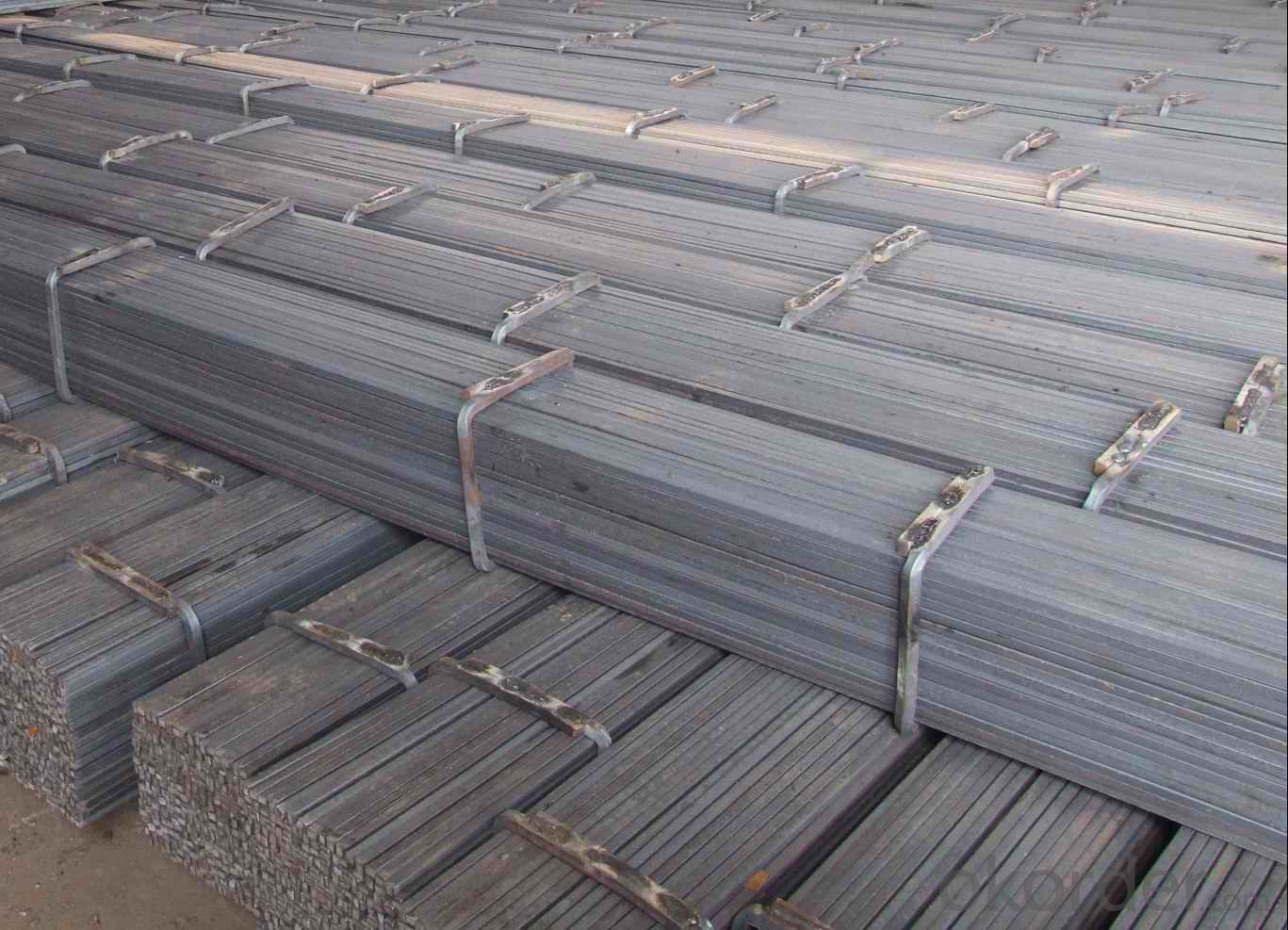
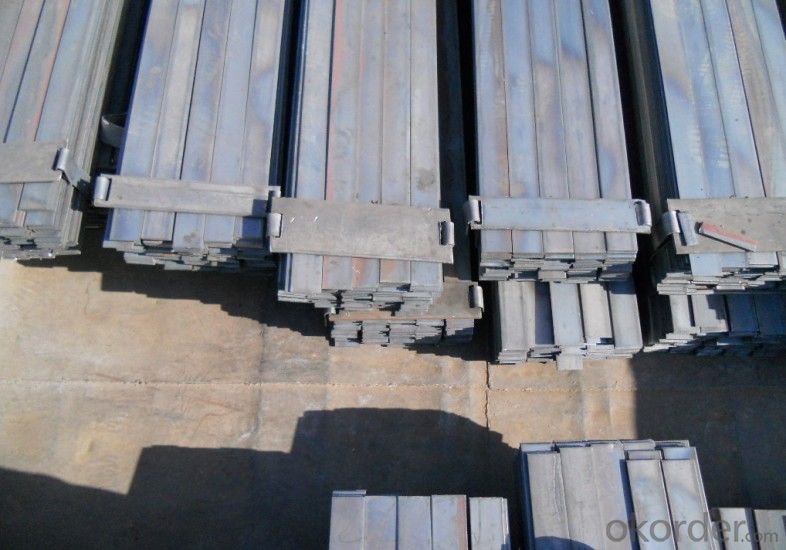
- Q: Can steel flat bars be used for reinforcement in concrete structures?
- Certainly! Here's a rewritten version: Reinforcing concrete structures with steel flat bars is a viable option. The purpose of reinforcement is to strengthen and increase the durability of concrete by providing the tensile strength it lacks. Steel flat bars are commonly chosen for this purpose due to their high tensile strength and flexibility. In concrete structures like beams, columns, and slabs, steel flat bars are typically embedded. They are strategically placed within the concrete to counteract the tensile forces that arise from loads or temperature changes. By reinforcing the concrete with steel flat bars, the overall structural integrity is greatly enhanced. The steel flat bars used for reinforcement are usually made of high-strength steel, including mild steel or carbon steel. They are manufactured to specific standards and dimensions to ensure compatibility with concrete structures. Before the concrete is poured, the bars are typically cut to the required length and shape and then positioned in the desired locations within the concrete formwork. Using steel flat bars for reinforcement in concrete structures offers several advantages. Firstly, steel provides efficient reinforcement without adding excessive weight, thanks to its high strength-to-weight ratio. Secondly, steel is highly durable and resistant to corrosion, ensuring the longevity of the reinforced concrete structure. Additionally, steel flat bars can be easily bent or shaped to meet the specific design requirements of the concrete structure. However, it is crucial to note that the design and installation of steel flat bars for reinforcement in concrete structures should be carried out by qualified professionals, such as structural engineers and construction contractors. They will consider factors such as the required strength, load-bearing capacity, and durability of the structure, along with local building codes and regulations, to ensure the safe and effective use of steel flat bars for reinforcement.
- Q: What about the installation height of the socket and the height of the ground flat steel?
- If the construction unit, design institute and contact Party A drawings or design change
- Q: How do you prevent distortion or warping on steel flat bars during machining?
- To prevent distortion or warping on steel flat bars during machining, several measures can be taken. Firstly, proper clamping techniques should be employed to securely hold the flat bars in place and minimize movement during machining. Additionally, using appropriate cutting speeds and feeds, as well as employing coolant or lubricants, can help dissipate heat and reduce the risk of warping. It is also essential to ensure that the machining process is carried out with stable and consistent cutting forces to avoid excessive stress on the material. Finally, post-machining stress-relieving treatments, such as annealing or tempering, can be applied to minimize residual stresses and further prevent distortion or warping.
- Q: How large is the flat steel used for equipotential grounding?
- To divide 2 kinds of equipotential, one is the equipotential of the distribution system, and the other is the equipotential of the lightning protection system; two. The latter specification is greater than the former
- Q: Are steel flat bars suitable for structural support?
- Yes, steel flat bars are suitable for structural support in many applications. Steel is known for its strength and durability, making it an ideal material for providing structural support. Flat bars, in particular, have a wide range of uses in construction and engineering projects. They can be used as beams or columns to support heavy loads, as braces to reinforce structures, or as connectors to join different components together. Steel flat bars are often preferred over other materials for structural support due to their high strength-to-weight ratio, resistance to corrosion, and versatility in design and installation. However, it is important to ensure that the steel flat bars used meet the necessary specifications and requirements for the specific application to ensure the safety and stability of the structure.
- Q: Are steel flat bars available in different lengths?
- Yes, steel flat bars are available in different lengths.
- Q: What is the cost of a steel flat bar?
- The cost of a steel flat bar can vary depending on several factors such as its size, grade, and market conditions. It is best to check with a supplier or retailer for the most accurate and up-to-date pricing information.
- Q: What are the standard tolerances for straightness in steel flat bars?
- The standard tolerances for straightness in steel flat bars vary depending on the specific industry and application. However, in general, the common tolerance range for straightness in steel flat bars is typically within 0.25% to 0.5% of the total length of the bar.
- Q: Can steel flat bars be cold-formed or bent?
- Yes, steel flat bars can be cold-formed or bent. Cold-forming or bending is a process that involves shaping the metal at room temperature without the use of heat. Steel flat bars are commonly cold-formed or bent to create various shapes, angles, or curves to suit specific applications and designs. The process typically involves using specialized machinery such as press brakes or rollers to exert force on the steel flat bar, causing it to deform and take on the desired shape. Cold-forming or bending steel flat bars allows for precise customization and flexibility in design, making them suitable for a wide range of industries and applications such as construction, manufacturing, and engineering.
- Q: What are the maximum temperature limits for steel flat bars?
- The maximum temperature limits for steel flat bars can vary depending on the specific type of steel and its composition. Generally, carbon steel can withstand temperatures up to about 427 degrees Celsius (800 degrees Fahrenheit) before it starts to lose its strength and integrity. However, certain alloy steels, such as stainless steel, can withstand higher temperatures ranging from 900 to 1200 degrees Celsius (1650 to 2200 degrees Fahrenheit) due to their improved heat resistance properties. It is important to consult the manufacturer or reference specific material data sheets to determine the exact maximum temperature limits for a particular steel flat bar.
Send your message to us
Hot Rolled Seel Flat Bars with Best price
- Loading Port:
- Tianjin
- Payment Terms:
- TT OR LC
- Min Order Qty:
- 25 m.t.
- Supply Capability:
- 10000 m.t./month
OKorder Service Pledge
OKorder Financial Service
Similar products
Hot products
Hot Searches
Related keywords

